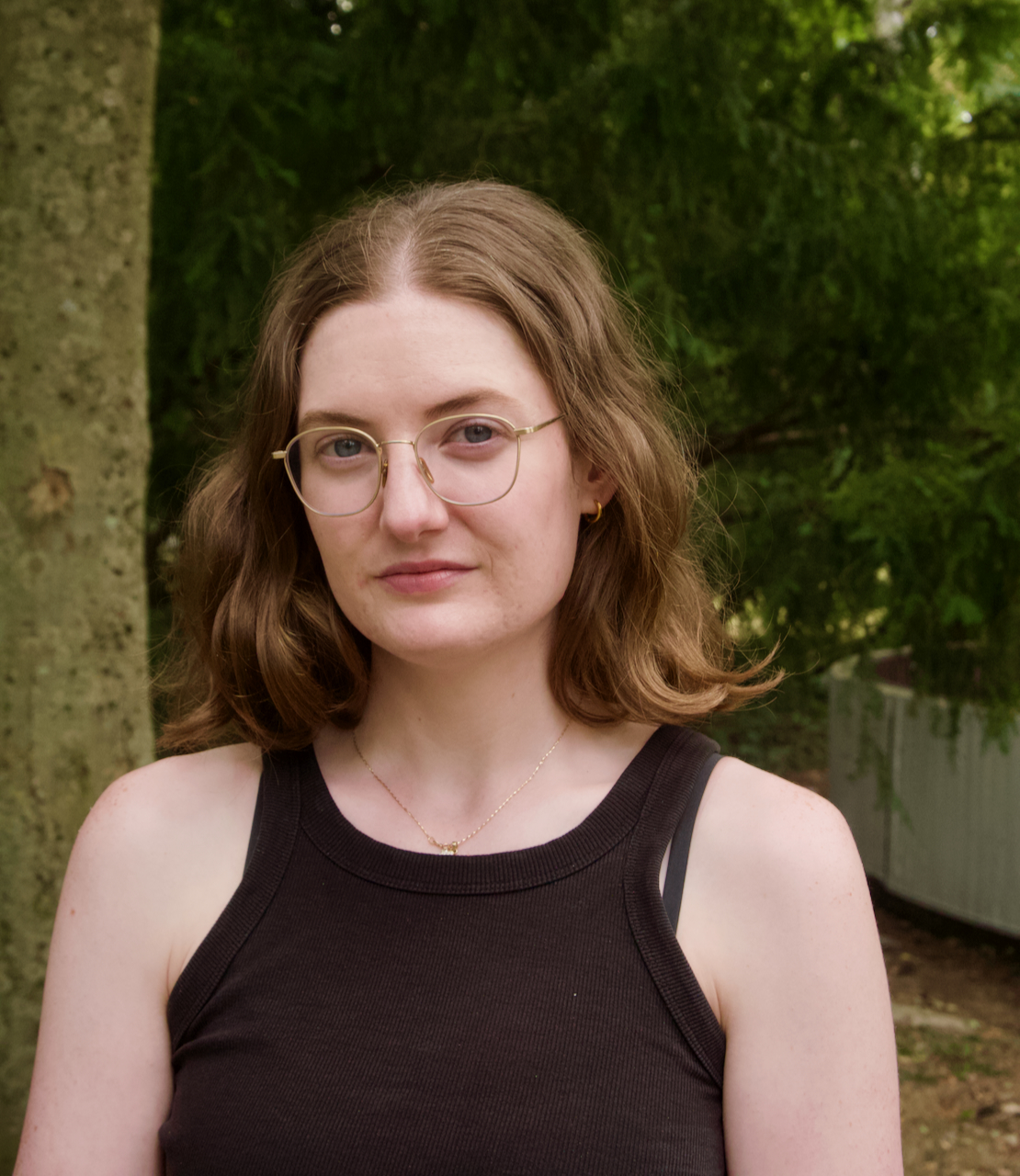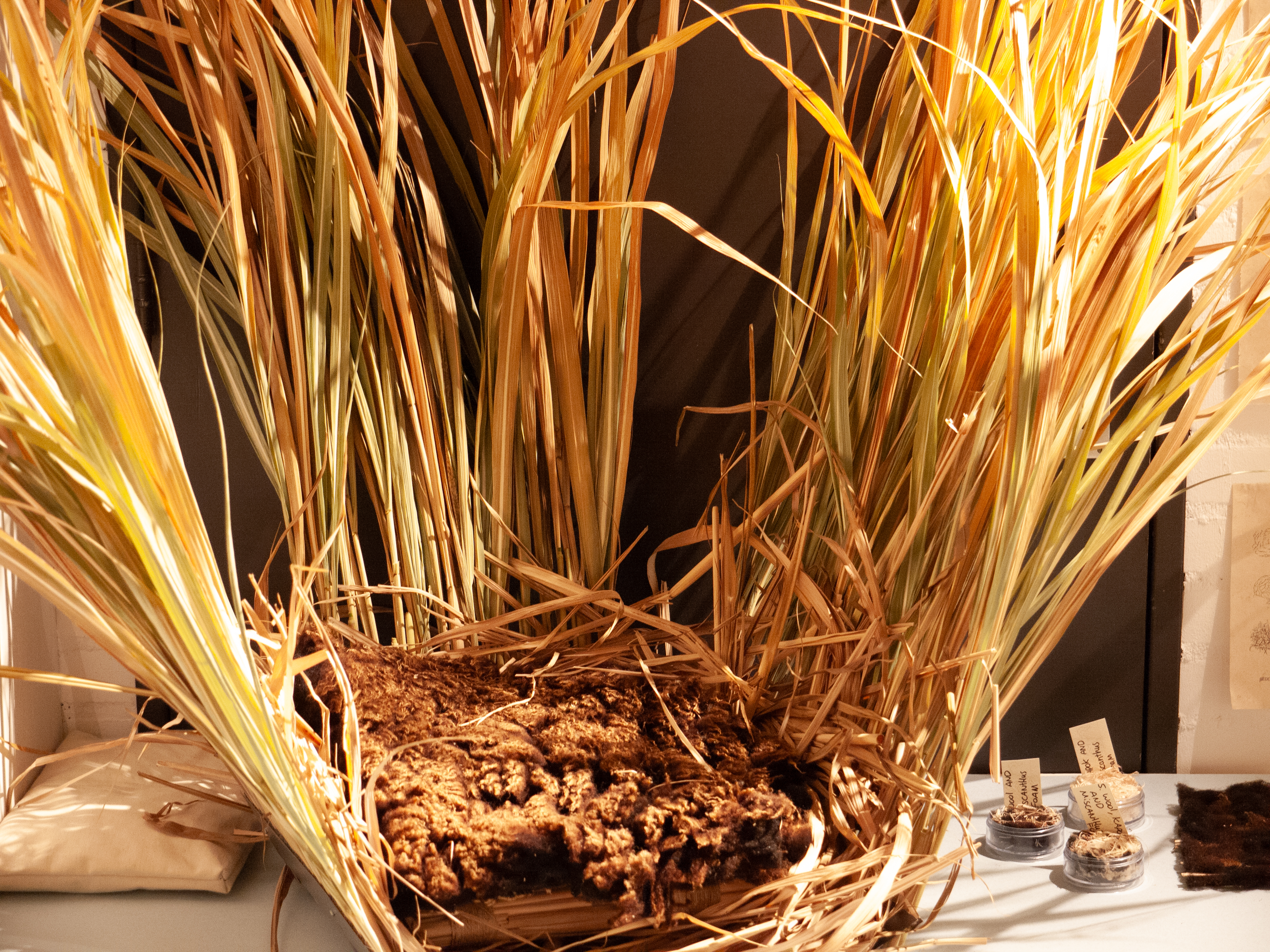The past few weeks, the third year product designers at WdKA worked on on an exciting new project: rethinking the adaptability and creative potential of linoleum. In collaboration with renowned linoleum manufacturer Forbo Flooring, students explored this natural material, which has remained largely unchanged for over 150 years. Through intensive material investigation, they experimented with its unique properties, uncovering new possibilities for design.
This exploration of linoleum—rooted in history yet open to new interpretations—connects the dots between its traditional use and its future potential. Linoleum is a completely natural material, made from ingredients like wood, cork, linseed oil, rosin, and jute or paper backing. It is a material deeply tied to nature, and for many students, this connection became a source of inspiration.
They are presenting their studycases at the Dutch Design Week 2024, at the ‘Class Of 24’ exhibition in the Klokgebouw that can be visited until October 27th.
Below, you can find out more about four of the projects made by Geertje, Maya and Devancey. Want to know more about the other projects? Check out this Instagram page.
Geertje Peters: A Study of Nature’s Forms
For Geertje Peters, the project provided an opportunity to explore her long-standing fascination with nature. "I've always been inspired by nature, even from a young age," she explains. Her two designs, Natural Illusions and Nature’s Blueprint, are the results of this inspiration. In Natural Illusions, Peters explored organic shapes, using a laser cutter to create both positive and negative forms. "You get the same shape but in two completely different ways," she describes.
Her second project, Nature’s Blueprint, involved more hands-on techniques, combining CNC cutting with hand-carving. Peters experimented with depth and layers, drawing inspiration from landscapes. For her, the project was about material investigation rather than creating a final product. "It’s still very experimental. I focused entirely on the material and its possibilities," she notes. Peters plans to further refine one of these concepts post-exhibition.
Linoleum presented unique challenges for Peters, as she had never worked with the material before. She experimented with furniture linoleum, using layering techniques to make the material thicker and stronger. “It’s a flat material, so it’s difficult to make a 3D object, but I tried to do that by layering and working with it in different ways,” she explains. While the process was initially challenging, she found her direction through her deep-rooted interest in the natural world.
Devancey: Hacking Linoleum for Footwear
For Devancey, the project was about pushing boundaries. Known for his work in furniture design, he decided to explore something entirely new—footwear. His project, Footers, challenged the static nature of linoleum, transforming it into a dynamic material suitable for shoe design. “Linoleum is not very dynamic, but I wanted to hack it, to make it move and be flexible,” he says.
Devancey experimented with vacuum forming, laser cutting, and engraving to mold the material into shoe silhouettes. “It was difficult at first, especially because linoleum can crumble at higher temperatures,” he notes. Working within these limitations, he discovered how to manipulate the material and shape it into something unexpected. Now, he plans to continue his footwear project, seeing linoleum as a material with potential for this unconventional application.
Maya Goedert: Layers and Playfulness
Maya Goedert’s project, Lino Layerscape, took her in a different direction—one that focused on playful layering and experimentation. "I was doing a lot of layering, just experimenting with different forms and shapes," she recalls. The result was an evolving installation that, while not a finished product, demonstrated the versatility of linoleum.
Starting with scraps and combining them with wood, Maya created an intricate structure that drew attention to the material’s texture and layering potential. "It wasn’t really doing much at first, but then I combined it with wood, and it just clicked," she explains. She sees potential for further development, possibly turning the installation into a piece of furniture, like a shelf that highlights the layered aesthetic.
For Maya, the project was a playful exploration that encouraged her to think differently about materiality. "It looked simple at first, but the more you look at it, the more intriguing it becomes because of the layers," she says. Like her peers, she views the project as a starting point for future ideas and innovations.
A Glimpse into the Process
The WdKA exhibition Layers of Lino showcases these experimental projects, giving visitors a rare look into the creative process behind material exploration. As Geertje points out, “This exhibition is really a glimpse into our process. These aren’t final products but experiments.” Her thoughts are echoed by her classmates, who also emphasize that their work is more about exploration than completion.
Devancey expresses excitement about the opportunity to present alongside his peers: “It’s fun to see how everyone took the same material and techniques and came up with completely different outcomes."
We would like to thank Forbo Flooring and the Stichting Academie van Beeldende Kunsten en Technische Wetenschappen Rotterdam, without their support this project wouldn’t have been possible.


